|
#1
| |||
| |||
|
I am searching here question paper for Joint Entrance Screening Test physics exam ?? please give me soon ?/
|
|
#2
| ||||
| ||||
|
Here I am giving you question paper for Joint Entrance Screening Test physics exam in PDF file attached with it so you can get it free of cost .. 6. A K meson (with a rest mass of 494 MeV) at rest decays into a muon (with a rest mass of 106 MeV) and a neutrino. The energy of the neutrino, which can be taken to be massless, is approximately a) 120 MeV b) 236 MeV c) 300 MeV d) 388 MeV 7. There are on average 20 buses per hour at a point, but at random times. The probability that there are no buses inve minutes is closest to a) 0.07 b) 0.60 c) 0.36 d) 0.19 9. If, in a Kepler potential, the pericentre distance of a particle in a parabolic orbit is rp while the radius of the circular orbit with the same angular momentum is rc, then a) rc = 2rp b) rc = rp c) 2rc = rp d) rc = p2rp 18. For a diatomic ideal gas near room temperature, what fraction of the heat supplied is available for external work if the gas is expanded at constant pressure? a) 1/7 b) 5/7 c) 3/4 d) 2/7 19. A box contains 100 coins out of which 99 are fair coins and 1 is a double-headed coin. Suppose you choose a coin at random and toss it 3 times. It turns out that the results of all 3 tosses are heads. What is the probability that the coin you have drawn is the double-headed one? a) 0.99 b) 0.925 c) 0.075 d) 0.01 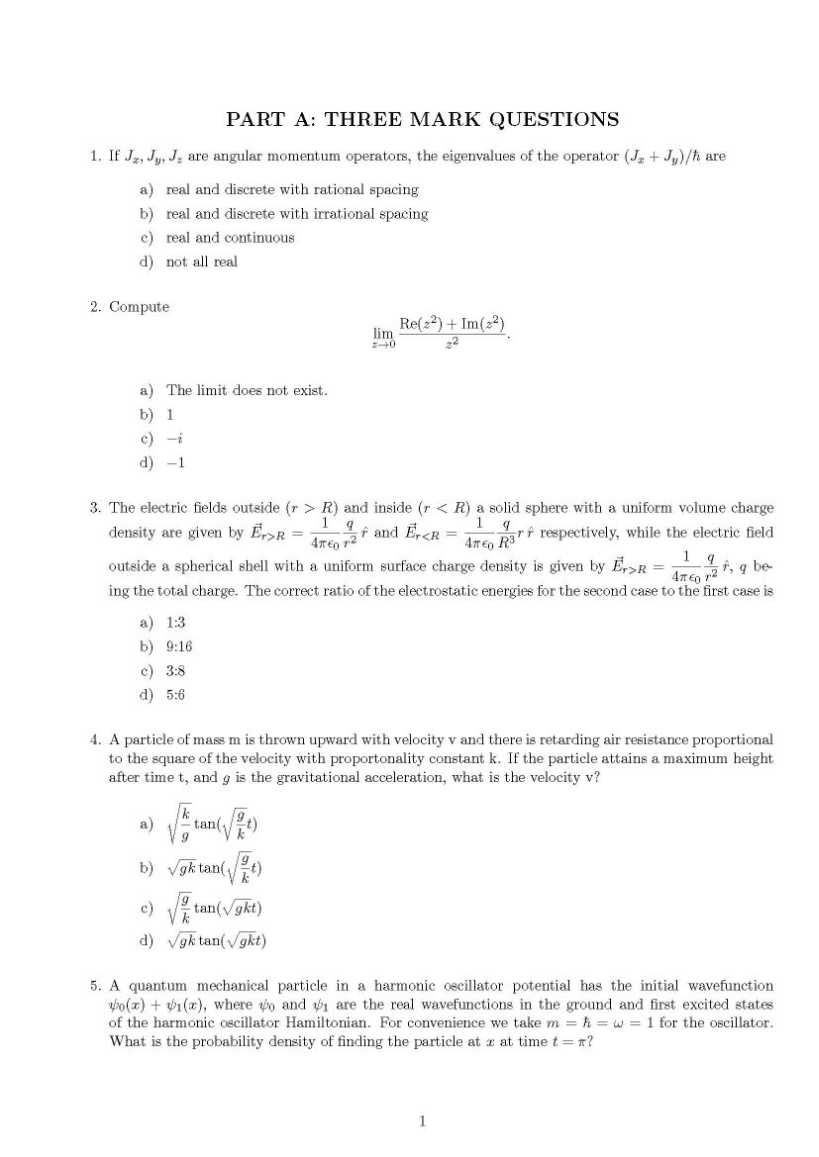 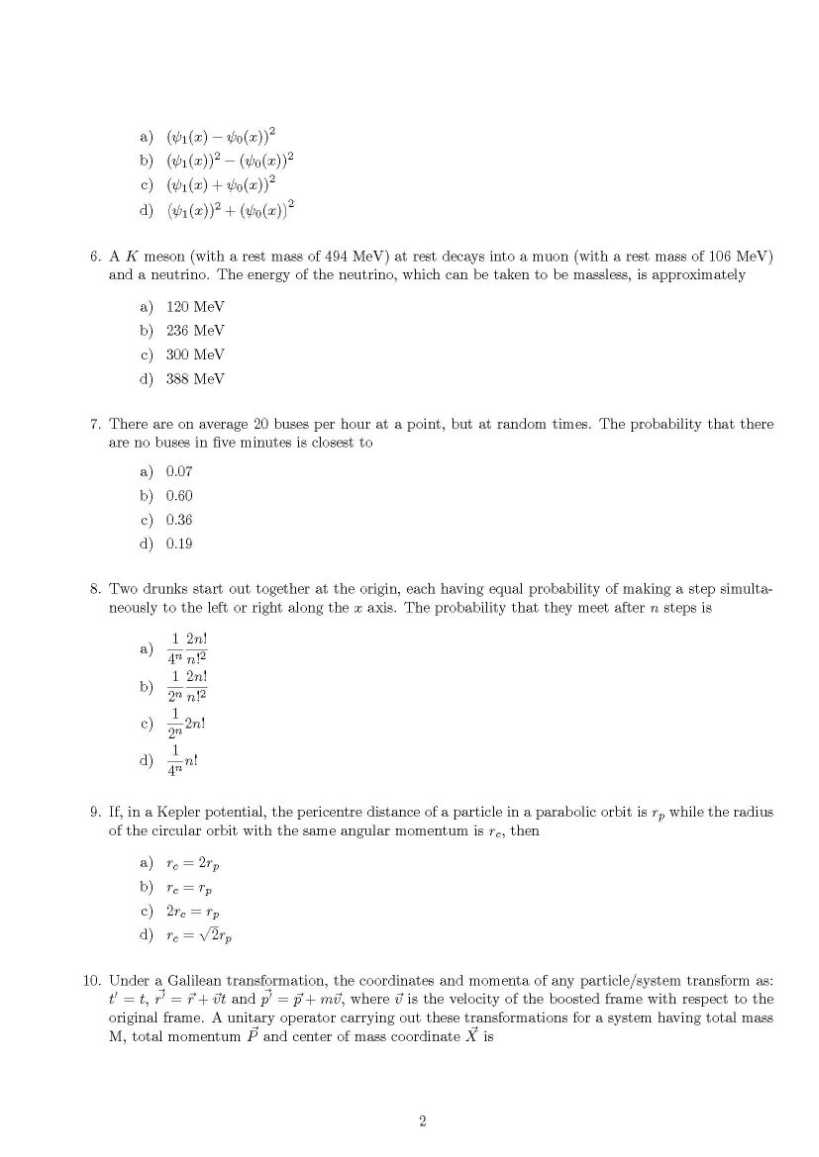 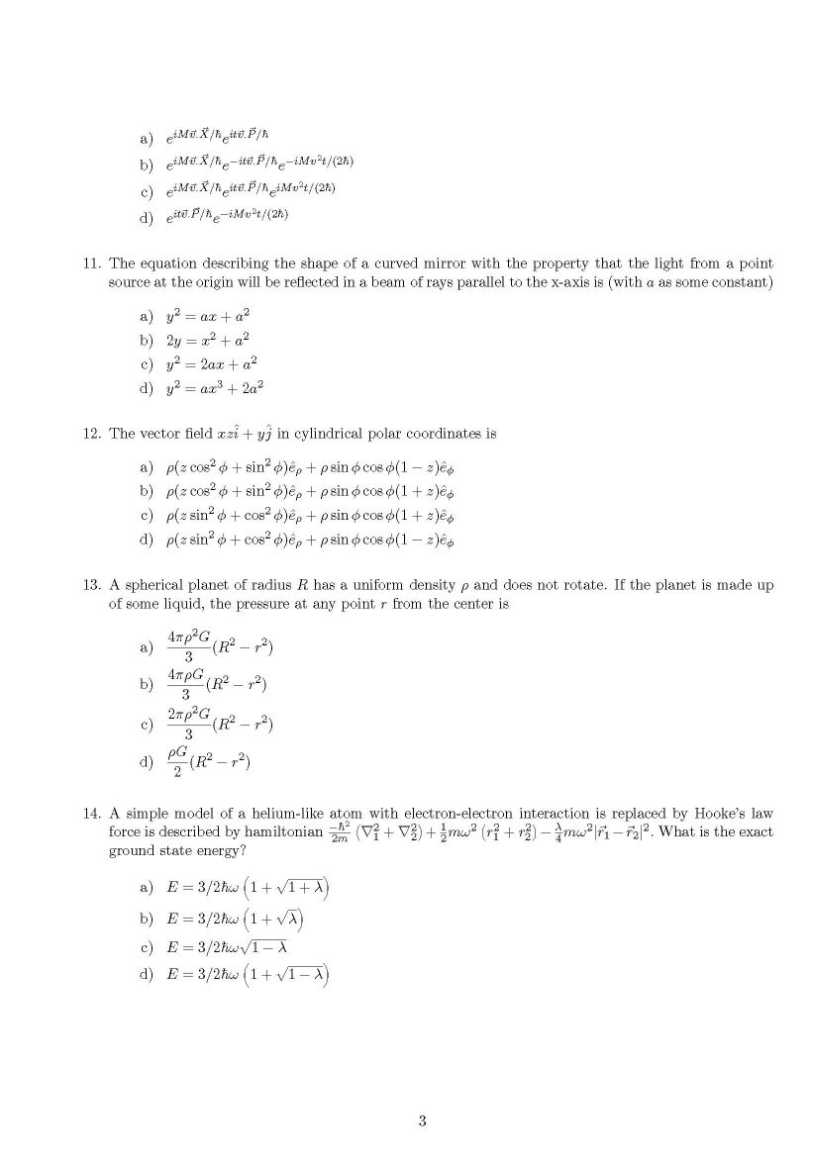 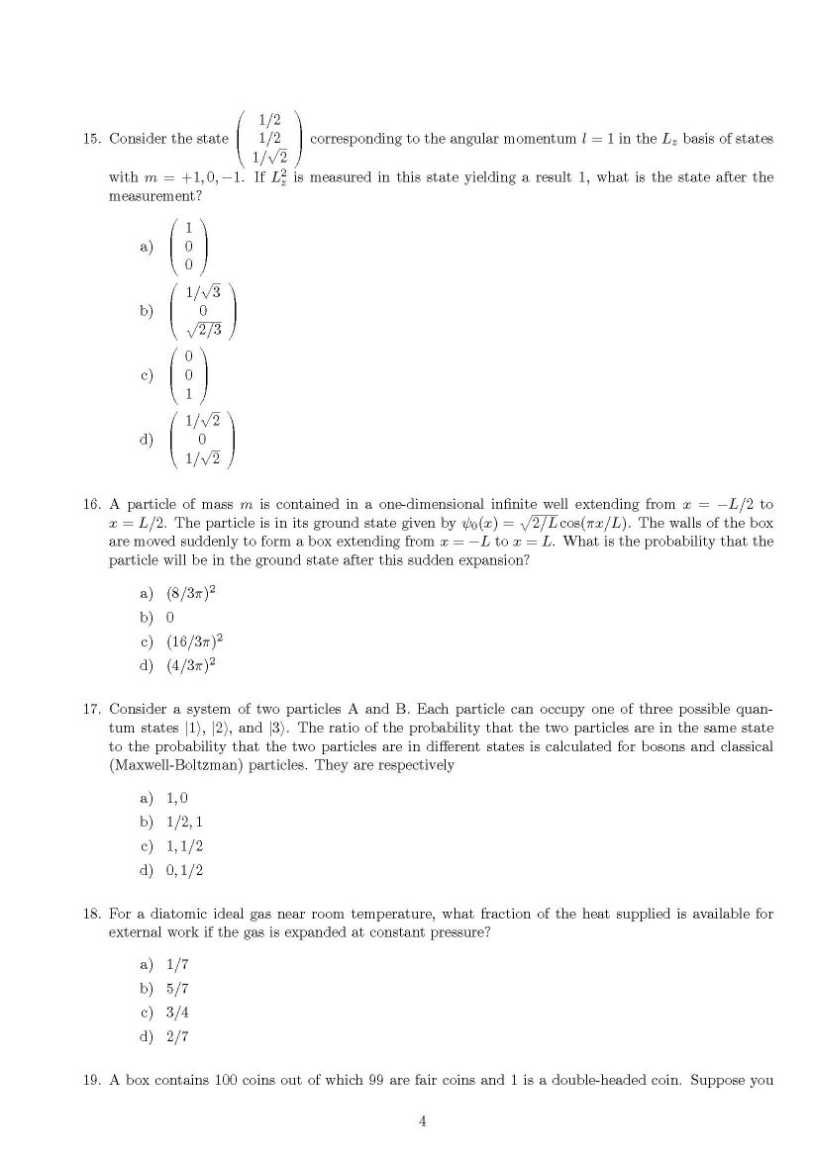 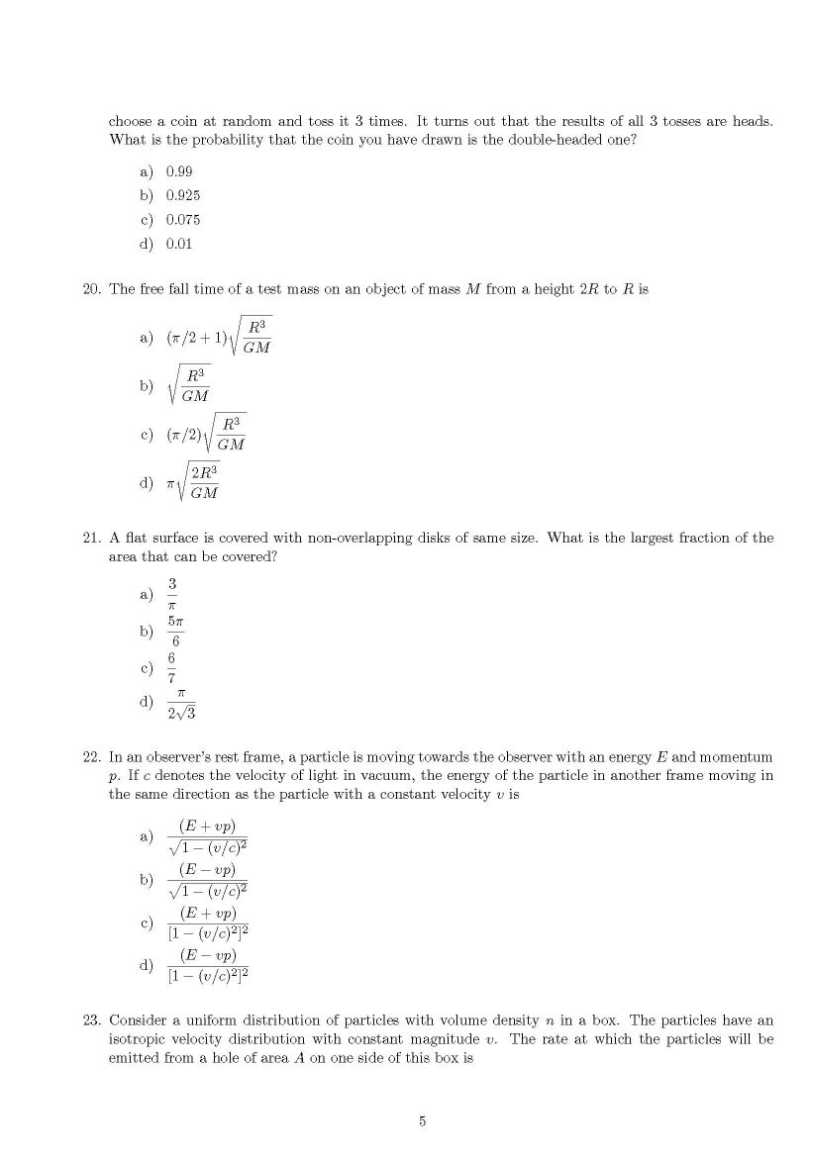
__________________ Answered By StudyChaCha Member |
|
#3
| |||
| |||
|
As you are asking about the Sample question for JEST Physics Exam here I would like to provide you the same please feel free to have a look on that Sample question for JEST Physics Exam      JEST Physics Syllabus Mathematical Methods Vector algebra and vector calculus; linear vector spaces, linear operators, matrices and Eigen value problem; Sturm–Liouville theory, classical orthogonal polynomials; linear ordinary differential equations, exact and series methods of solution; linear partial differential equations, solution by separation of variables; complex variables, analytic functions, Taylor and Laurent expansions, contour integration; Fourier and Laplace transforms. Classical Mechanics Newton’s laws, conservation of energy and momentum, collisions; generalized coordinates, principle of least action, Lagrangian and Hamiltonian formulations of mechanics; symmetry and conservation laws; central force problem, Kepler problem; rigid body motion; small oscillations and normal modes; special relativity in classical mechanics. The uncertainty principle; conceptual basis of quantum mechanics; Schrodinger equation, problems in one, two and three dimensions, bound states and tunnelling, particle in a box, harmonic oscillator, hydrogen atom; matrix formulation of quantum theory, unitary transformations and Hermitian operators and their properties; orbital and spin angular momenta, addition of angular momenta; time independent and time dependent perturbation theory, Fermi golden rule; elementary scattering theory. Electromagnetic Theory Laws of electrostatics and magnetostatics, methods of solving boundary value problems, multipole expansion; fields in conducting, dielectric, diamagnetic and paramagnetic materials; Faraday’s law and time varying fields; conservation of charge, displacement current; Maxwell’s equations; energy and momentum of electromagnetic fields, Poynting theorem; propagation of plane electromagnetic waves, reflection and refraction of plane electromagnetic waves, electromagnetic waves in dispersive and conducting media; scalar and vector potentials, Coulomb and Lorentz gauge, wave equation in terms of electromagnetic potentials; radiation from moving charges, retarded and advanced potentials, Lienard-Wiechert potentials, multipole radiation, Larmor’s formula. Quantum Mechanics The uncertainty principle; conceptual basis of quantum mechanics; Schrodinger equation, problems in one, two and three dimensions, bound states and tunnelling, particle in a box, harmonic oscillator, hydrogen atom; matrix formulation of quantum theory, unitary transformations and Hermitian operators and their properties; orbital and spin angular momenta, addition of angular momenta; time independent and time dependent perturbation theory, Fermi golden rule; elementary scattering theory Thermodynamics and Statistical Physics Laws of thermodynamics; work and heat; thermodynamic potentials, Maxwell’s relations; statistical ensembles; partition function; classical ideal gas, harmonic oscillators; classical and quantum statistics; Fermi and Bose gases; black body radiation; first and second order phase transitions. Solid State Physics Simple crystal structures and X-ray diffraction; lattice vibrations and thermal properties of solids; free electron theory; band theory of solids; metals, semiconductors and insulators; basic electrical, optical and magnetic properties of solids; elements of superconductivity. Electronics Diodes, rectifier circuits, junctions, transistors and field effect devices; device characteristics, frequency dependence and applications like active filters and oscillator circuits; solar cells, photo detectors, and LEDs; operational amplifiers and their applications; Boolean algebra, digital techniques and applications: registers, counters, comparators and similar circuits; A/D and D/A converters; microprocessor and microcontroller basics. Nuclear and Particle Physics Structure of the nucleus; binding energy, nuclear fusion and fission; radioactive decay, barrier penetration by alpha particles; classification of elementary particles and fundamental interactions, leptons and hadrons, elementary ideas of quark model; conservation laws in particle reactions. Atomic and Optical Physics Interference, diffraction and polarization of light; photoelectric effect; spectra of single and multiple electron atoms; Zeeman and Stark effects; electric dipole transition and selection rules; hyperfine structure; spontaneous and stimulated emission. Experimental data and error analysis Probability theory Gaussian and Poisson distributions; error analysis; propagation of errors; significant figures; least square fitting. more paper detail to atteched a pdf file............................
__________________ Answered By StudyChaCha Member |